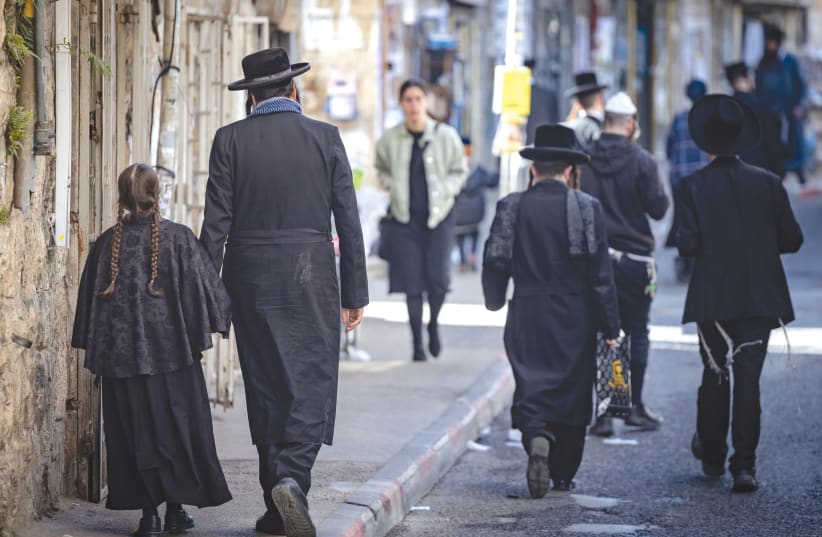What do methods of burial have to do with Jerusalem’s economic viability?
A small clause in Jerusalem’s 2024 municipal coalition agreement caught my eye. The mayor and Degel HaTorah, an ultra-Orthodox party, agreed that the municipality would give top priority to “field burials” so that every observant Jew “will have to the option of being buried directly in the ground, according to tradition and the norm.”
Land is limited, not least in Jerusalem, and the country’s authorities are attempting to promote efficient burial methods, in niches and in levels. This is not new to Judaism – during the Second Temple period, bones were moved to an ossuary after about a year in a niche. But old habits die hard and we are used to ground burial.
Other than wondering who will decide if the deceased was observant enough to merit a piece of land, the clause is a declaration of preference, and some might deem it discrimination. Are you religious? You will receive a rare public resource. No? Never mind that you may be a doctor and pay the highest local rates in the country – your future will be in a niche and your favorite flowers will not grow around your remains.
About a million people live in Jerusalem, Israel’s most populous city. In 1995, when the Central Bureau of Statistics began to grade locations by their social-economic status (income, housing density etc.), Jerusalem was in cluster 5 of 10. It has since dropped to cluster 2.
How Jerusalem's change in population took place

As we celebrate Jerusalem and mark its 1967 reunification with ceremonies, processions and declarations, it is worth asking how this happened.
Over the years, two populations – the Arabs and ultra-Orthodox, both with low rates of employment and income – have grown. In 1995, Jews were some 70% of the city’s residents, and it is estimated that about a fifth of Jerusalemites were haredi. The remainder, some half of the city’s populace, was made up of secular, traditional, and non-haredi religious Jews.
Now Jews comprise 60% of the city’s population. Half are ultra-Orthodox. This means that approximately 30% of Jerusalemites are non-haredi Jews. In less than 30 years, Jerusalem’s economic engine was cut almost in half. At the same time, the city sunk from socio-economic cluster 5 to cluster 2.
Arabs make up 40% of the city’s residents. Most live in areas that were annexed after the Six Day War in 1967. At the time, it was decided not to grant them Israeli citizenship and most have not embarked on the long and slow road to a blue passport. They are, however, permanent residents of Israel and entitled to services such as public medicine. If this political complication were not enough, many schools in east Jerusalem use the Palestinian Authority (PA) curriculum. This is the poorest segment of Jerusalem’s population, and its infrastructure is lacking. The government is aware of the situation and last year approved a five-year plan designed to deal with it. But I doubt that most of the Jews who celebrate Jerusalem and its unification know about those living conditions, or even what is included in the city’s boundaries.
Currently, the ultra-Orthodox account for over half the Jews of Jerusalem. For the first time, there is a haredi majority in the municipal council. To their credit, their voter turnout is high – those who don’t bother to vote should not complain about outcomes.
All factions in the council participate in the current municipal coalition. Agreements with the liberal factions contain terms such as “equality” and “maintaining the status quo”, but I saw no clause concerning the needs of their voters which can be compared in its unequivocal determination to the commitment to field burial for the ultra-Orthodox.
For Jerusalem to flourish, it is essential that secular and traditional Jews remain here. To ensure that, their concerns must be recognized and addressed as legitimate and important. That is why people who keep kosher, like me, should rejoice at the opening of a new non-kosher restaurant and must regret the closure of places that were open on Shabbat, further undermining the quality of life of those who do not observe its sanctity in the traditional manner.
To ensure that this city does not continue to weaken, it must not only provide ways for some of its residents to be buried well, but it must also guarantee that all those who live here, can live well.
The writer was Israel’s first ambassador to the Baltic states after the disintegration of the Soviet Union, ambassador to South Africa, and congressional liaison officer at the embassy in Washington. She is a graduate of Israel’s National Defense College.
